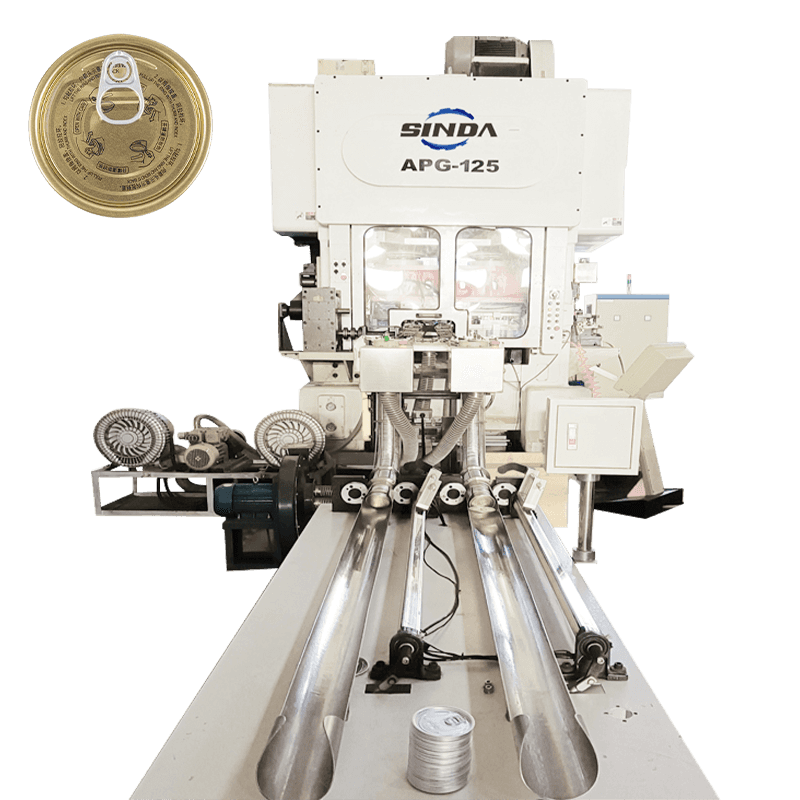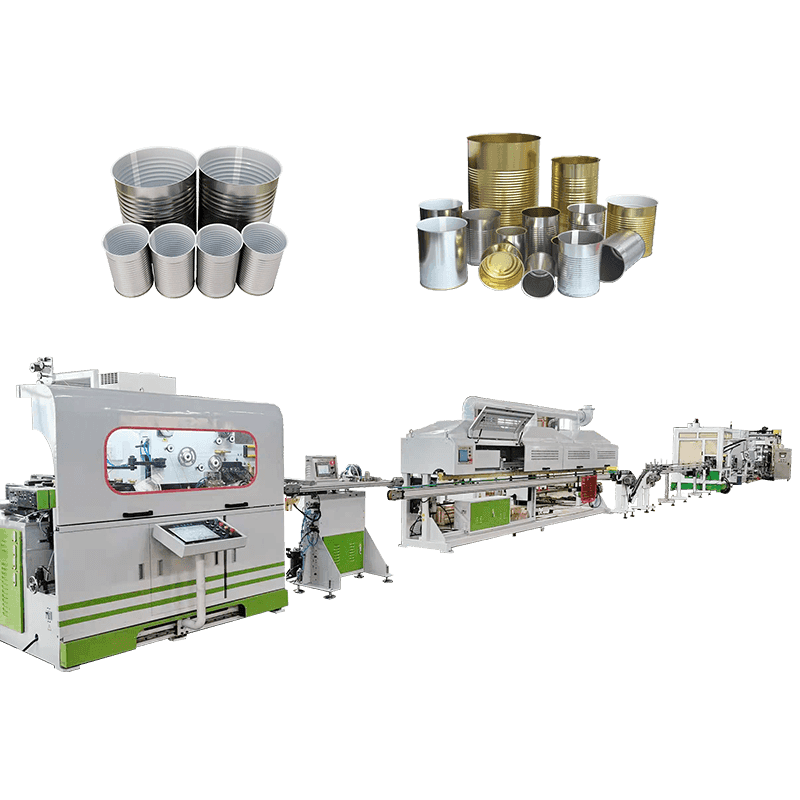Welding process optimization: precision control of resistance welding and induction welding
1. Precise control of welding parameters
The 3 piece food tin can production line mainly adopts resistance welding or high-frequency induction welding process. When running at high speed, slight deviations in welding speed, welding current, pressure and time will affect the quality of the weld. Therefore, a high-response, high-frequency control system is required to adjust these parameters in real time to ensure uniform and continuous welds.
2. Automatic compensation system improves stability
Some advanced production lines introduce automatic compensation systems to adjust the welding current and welding head pressure in real time according to material thickness, temperature changes and production rhythm. In this way, even if there is a slight deviation during high-speed operation, it can be corrected immediately to prevent welding virtual connection or overheating and melting.
Welding machine precision control: ensure the accuracy of curling and butt joint
1. Plate butt joint error affects welding
The can body of the 3 piece food tin can production line is made of iron sheets rolled into a cylindrical shape and then welded and sealed. If the curling is offset, misaligned or improperly overlapped, it will directly affect the fusion quality of the welding part. In order to avoid such problems, it is necessary to configure a precision guide device in the molding equipment to control the plate edge gap within an acceptable range.
2. High-speed visual inspection system auxiliary monitoring
Introducing high-speed cameras for curling trajectory monitoring can provide real-time feedback on curling deviation and drive the servo mechanism for correction. The visual system can also identify microcracks or irregular welds, which helps to remove unqualified cans in advance.
Gluing and sealing treatment: Improving the sealing ability of the weld area
1. Necessity of weld protective coating
The weld area usually needs to be coated with a layer of protective paint or sealant to prevent oxidation, rust or leakage due to internal liquid corrosion. In high-speed production, the uniformity of glue coating is particularly critical, and unevenness will cause local sealing failure.
2. Collaborative work of precision glue spraying and drying equipment
A glue coating system with precise control of the nozzle should be selected, combined with automatic quantitative control and mobile synchronization system to ensure consistent glue coating width and thickness. At the same time, the drying furnace should have a constant temperature system and wind speed adjustment function to ensure that the coating is fully cured and does not sag.
Compatibility and fault tolerance of tank structure design
1. Improving structural tolerance matching
If the roundness of the tank body is not well controlled after welding, it will affect the sealing effect of the cover or bottom. Therefore, the stability of the can body size directly affects the sealing of the entire can. It is necessary to strengthen the stability control of the plate flattening, forming, and pre-rolling processes.
2. Optimize the weld position and overlap width
A reasonable weld overlap width can improve the mechanical strength. Generally speaking, the weld should have a certain redundancy design. It should not be too narrow to avoid reducing the tensile strength, nor too wide to cause unnecessary heat concentration or material waste. The common overlap width range is controlled within 0.4~0.6mm.
Application and feedback mechanism of online inspection system
1. Automatic leak detection device
The high-speed production line is equipped with a vacuum or air pressure difference detection device, which can complete the air tightness detection of each can body within a few seconds. Once a micro-leak, pinhole or weld crack is found, it can be automatically removed and counted into the unqualified statistical system.
2. Real-time data recording and trend analysis
The industrial control system collects data such as welding temperature, current fluctuation, and test results of each station and each batch, and combines trend analysis to determine whether there is a trend of declining welding quality, and take timely intervention measures.
Operator training and maintenance system
1. Personnel's ability to respond to process changes
Although the system's automation level has increased, the operator's ability to perceive the equipment's operating status is still important. Regular training is required on process parameter identification, common fault judgment, and early warning response.
2. Regular maintenance to reduce welding deviation
Welding wheels, guide rails, and pressure mechanisms are prone to wear or deformation during long-term use. A standardized maintenance cycle needs to be formulated to keep the welding equipment running in a standard state. The replacement of key components should have traceable records to prevent fluctuations in welding quality due to device aging.
Material quality and process compatibility
1. Consistency of sheet thickness and hardness
If the sheet (such as tinplate) of the 3 piece food tin can production line fluctuates in thickness and hardness, it will affect the change in welding resistance, and then affect the fusion depth. A thickness and metallographic consistency screening mechanism needs to be added to the sheet procurement or factory inspection.
2. Welding surface oil control
Oil or oxide film will reduce welding stability, and it is more likely to cause skipping or cold welding during high-speed welding. The stability and cleanliness testing of the pre-treatment system (cleaning, degreasing, and drying) needs to be strengthened.

 English
English عربى
عربى русский
русский




